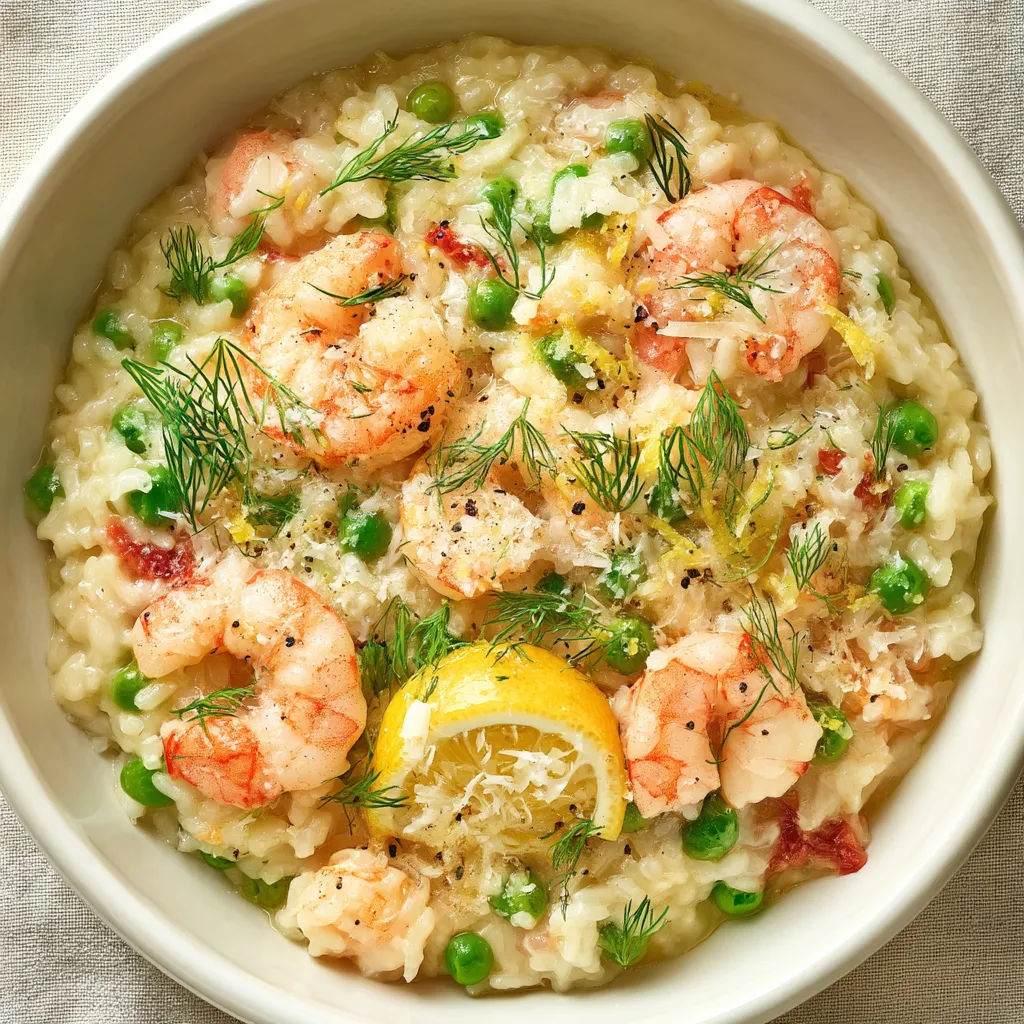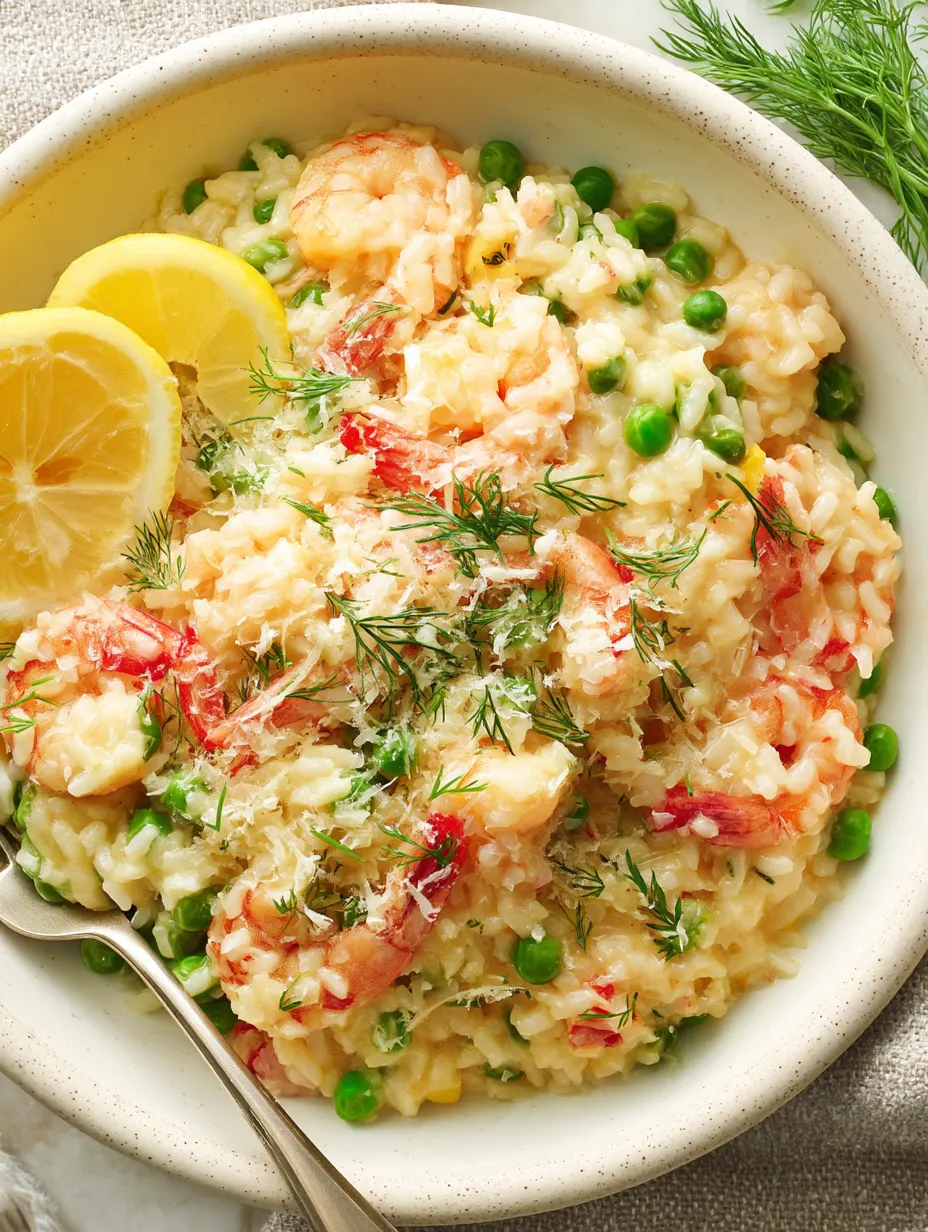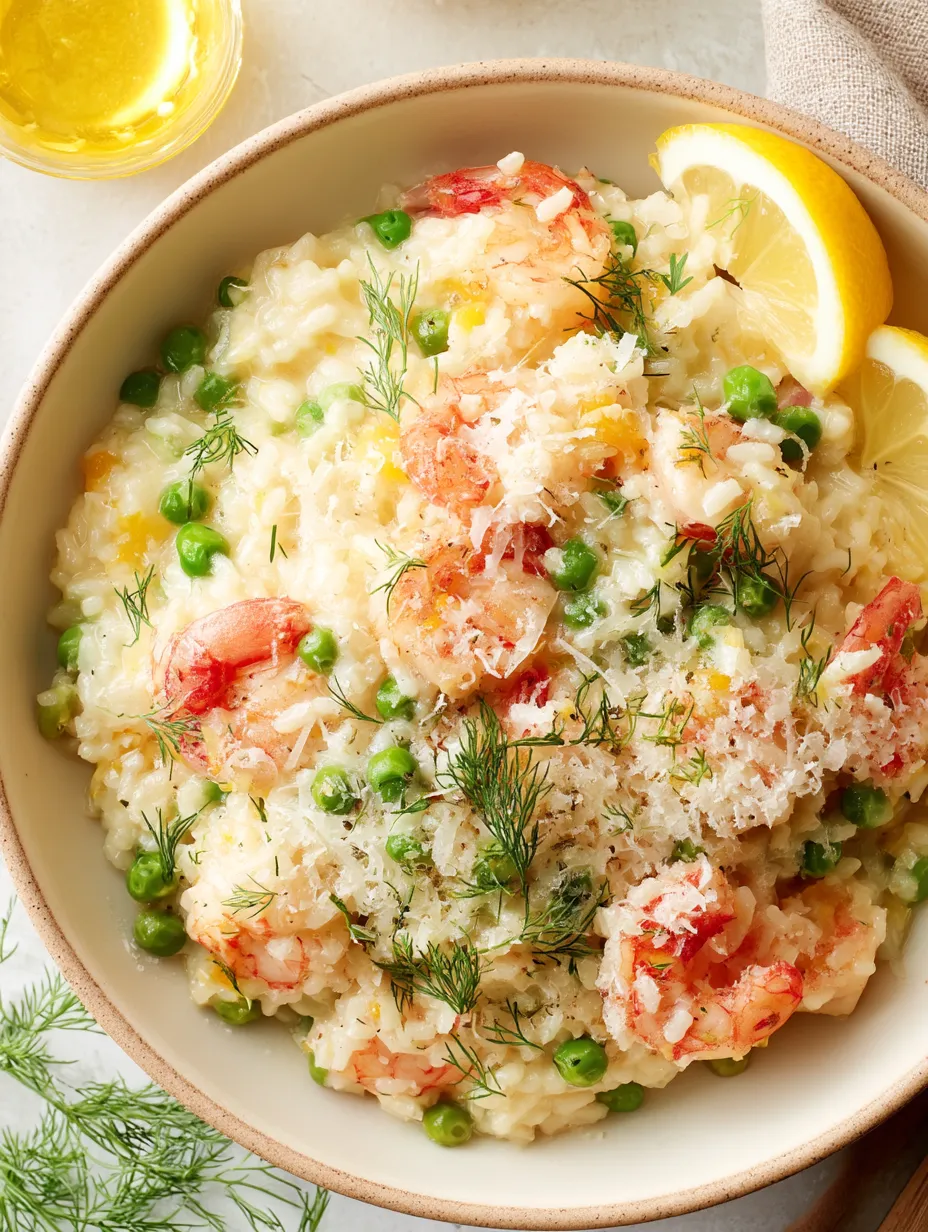 Save
Save
Fennel, garlic, and zippy lemon make this vibrant shrimp risotto extra fragrant. You'll pull it together fast enough for a regular night at home, but it's instantly dressed-up when guests pop by. Bites of sweet peas, silky rice, and juicy shrimp come together for a meal that feels special every time.
This is one of those dishes I tried out while it was pouring outside and I wanted something cozy but also kind of fancy. All that stirring turned into a relaxing groove, and that hit of lemon and fennel smelled like heaven filling the kitchen. Now, it's my ace for impressing people when I'm hosting.
Ingredients List
- Seafood or fish stock: this brings the deep, briny taste that really sets the flavor foundation
- Pecorino Romano cheese: brings a salty punch and makes the finished dish ultra creamy
- Frozen or fresh peas: they add a sweet crunch and some pretty green color
- Butter and olive oil: both go in to add taste and get the pan hot enough
- Cooked small shrimp: the main event, bringing sweet and tender seafood flavor
- Shallot: gives gentle sweetness that plays nice with all the seafood
- Risotto rice: grab Arborio, Carnaroli, or Vialone Nano for that signature creamy texture
- Crushed fennel seeds: subtle licorice taste, just right for this dish
- Fresh dill: sprinkle some on top for a burst of fresh herby flavor
- Lemon zest and juice: wakes everything up and balances the richness
- Dry white wine: keeps things bright and helps give the rice that creamy result
- Garlic: packs a savory punch without stealing the show from the shrimp
Easy-To-Follow Steps
- Final Touch:
- Add in the last bit of stock and stir around until the whole thing loosens up. Give it a tilt in the pan—if it glides smoothly and not in a clump, you’ve nailed it. Pop a lid on, turn off the burner, and let it chill for a minute while you plate up.
- Finish With Brightness:
- Gently stir in the shrimp, zest and juice from a lemon, and a good grind of pepper. The warmth will heat the shrimp through. Lemon keeps everything from feeling heavy. Taste for salt but you may not need much.
- Enrich The Texture:
- Now stir in a nice shower of grated cheese. It should melt in, making everything shiny and thick and rich.
- Add The Peas:
- Fold in your peas—fresh or thawed work. Splash in a bit more stock at the same time. Just a minute or two, so the peas stay snappy and green.
- Continue The Risotto Method:
- Keep going with the stock, a ladle at a time. Let the rice drink it up before you add more. When you’re down to about a cup of stock, move to the next bit.
- Begin The Gradual Stock Addition:
- Add a scoop of that hot stock and stir. When you can rake your spoon and see the bottom for a second before it comes together, time to add more stock.
- Deglaze With Wine:
- Pour in your white wine and stir, scraping all those flavor bits off the pan. Let it all soak in; the alcohol will disappear but the taste stays behind.
- Toast The Rice:
- Throw in the rice, fennel, and garlic. Stir for a couple minutes. See how the grains look shiny on the sides? That's what you want—it helps it cook right and taste awesome.
- Create The Flavor Base:
- In a big skillet, melt butter with oil over medium-low. Add chopped shallot. Stir for a few minutes, letting them get soft but not brown—just sweet and see-through.
- Prepare The Stock:
- Get your stock hot in a little pot. Keep it warm—not boiling—while you cook. Warm stock stops your risotto from slowing down every time you add more.
 Save
Save
Here’s my little secret: fennel seeds really make this dish sing. Picked up that trick in Venice, where my teacher made us crush them ourselves so the oils pop out. Takes a second, but wow—it tastes like real-deal Italy because of that!
Getting That Perfect Risotto Flow
If you want that classic risotto look, watch for it to move like slow lava—not stick up in one blob. Italians call that “all’onda”—think wavy. It should spread gently in your bowl. If it gets too packed-tight, stir in a slug of hot stock or even water. Risotto grabs extra liquid as it cools, so enjoy it soon for top-tier texture.
Prep Ahead and Leftovers
Fresh risotto is where it’s at—wait too long and it thickens up and gets gummy. You can chop and measure everything plus warm the stock ahead, but hold off on cooking till closer to eating. Got leftovers? Store them in a lidded container in the fridge up to two days. Reheat gently with a splash of water or stock and lots of stirring. Won’t be exactly the same as fresh but still tasty.
Change It Up for the Season
This is a base you can swap out all year. When it’s spring, throw in asparagus or favas. Summer? Use corn or little tomatoes. In the fall, go for mushrooms or roasted squash. Not in the mood for shrimp? Try scallops, clams, or a bit of lobster. Just stick to the right rice and stock levels, and experiment with what’s in season.
 Save
Save
Recipe FAQs
- → Which kind of rice is the best for making risotto?
Go for Arborio, Carnaroli, or Vialone Nano rice since they have the perfect starch for that creamy finish you’re looking for.
- → Can I swap fresh shrimp with frozen?
Yep, frozen shrimp works great! Just make sure you defrost it all the way and pat it dry before tossing it in so it cooks up nicely.
- → How do I warm up leftover risotto without it drying out?
Heat the risotto in a pan over low-medium heat with a splash of broth or water. Stir it until it’s hot and creamy again.
- → Is there a good alternative to Pecorino Romano cheese?
If you don’t have Pecorino Romano, Parmesan cheese is a fantastic substitute. It offers a similar nutty, salty taste.
- → How do I keep risotto from getting stiff after cooking it?
It’s best to eat risotto as soon as it’s ready. If it starts to firm up, stir in a bit of broth or water to loosen it up before serving.
